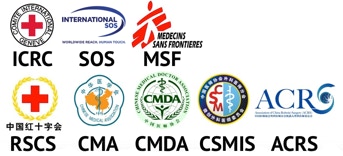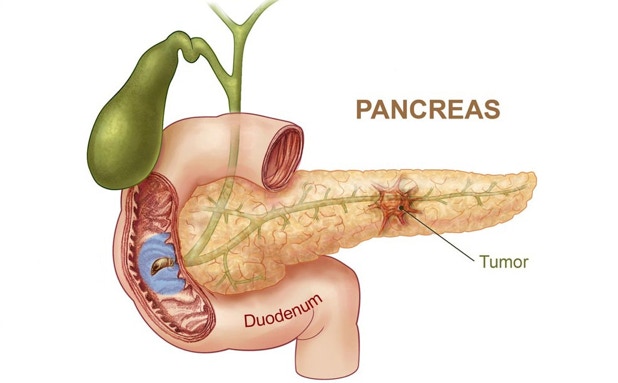

Doctors
Institutions
Conditions
Drugs
Insurances
TCM
Research
About Us

What is cancer?
Cancer is when cells in the body change and grow out of control. Your body is made up of tiny building blocks called cells. Normal cells grow when your body needs them, and die when your body does not need them any longer.
Cancer is made up of abnormal cells that grow even though your body doesn't need them. In most cancers, the abnormal cells grow to form a lump or mass called a tumor. If cancer cells are in the body long enough, they can grow into (invade) nearby areas. They can even spread to other parts of the body (metastasis).
What is pancreatic cancer?
Pancreatic cancer is cancer that starts in your pancreas. In this cancer, normal cells in the pancreas undergo a series of changes. This can eventually lead to excess cell growth and the formation of tumors.
Understanding the pancreas
The pancreas is an organ behind the stomach and in front of the spine. It’s about 6 inches long. One end is wide and is called the head. The middle is called the body. The narrow end is called the tail. The pancreas is made up of two main types of cells.
The exocrine pancreas is made up of cells that make digestive juices. These help your body break down foods. Most pancreatic cancers start in this part of the pancreas. Pancreatic juices contain chemicals called enzymes that help you digest food. The pancreas releases these juices when during meals. The juices enter your intestine through tubes called ducts. The main pancreatic duct is at the head of the pancreas. It joins the common bile duct which comes from the liver and gallbladder. The juices from the pancreas mix with other substances from the liver and gallbladder. The merged ducts open into the first part of the small intestine (duodenum). In the duodenum, the juices help break down fats, sugars, and proteins from the food you eat.
The endocrine pancreas makes hormones that are released into the blood. They help control how your body works. The pancreatic endocrine cells are arranged in small clumps called islets of Langerhans. They make many hormones, including insulin and glucagon. These hormones help your body use and store the energy created from the food you eat. A small number of all pancreatic cancers start in endocrine cells.
What are the types of cancer in the pancreas?
Here’s an overview of the types of cancer that can start in the pancreas:
Adenocarcinomas. These exocrine cancers start in cells with glandular properties, or cells that secrete. The majority (more than 95%) of pancreatic cancers are adenocarcinomas. This is usually what’s meant by the term pancreatic cancer.
Pancreatic neuroendocrine tumors (NETs). These tumors, also known as islet cell tumors, start in endocrine cells in the pancreas. There are many types of pancreatic NETs. They can be noncancerous (benign) or cancerous (malignant).
Other types of cancer that can start in the pancreas are much less common. They include acinar cell carcinomas, adenosquamous carcinomas, and squamous cell carcinomas. They also include signet ring cell carcinomas and giant cell tumors.
How pancreatic cancer grows and spreads
Pancreatic cancer often grows within the pancreas for a long time before it causes any symptoms. If the cancer grows outside the pancreas, it often goes into the nearby bile ducts and lymph nodes in your belly (abdomen). In some cases, it spreads to other nearby areas. Pancreatic cancer may also spread to distant parts of the body. These can include your liver or lungs.
When pancreatic cancer spreads to another part of the body, it’s not considered a new cancer. For instance, if it spreads to your liver, it’s not considered liver cancer. It’s called metastatic pancreatic cancer. It’s still treated like pancreatic cancer.
Talk with your healthcare provider
If you have questions about pancreatic cancer, talk with your healthcare provider. Your healthcare provider can help you understand more about this cancer.














